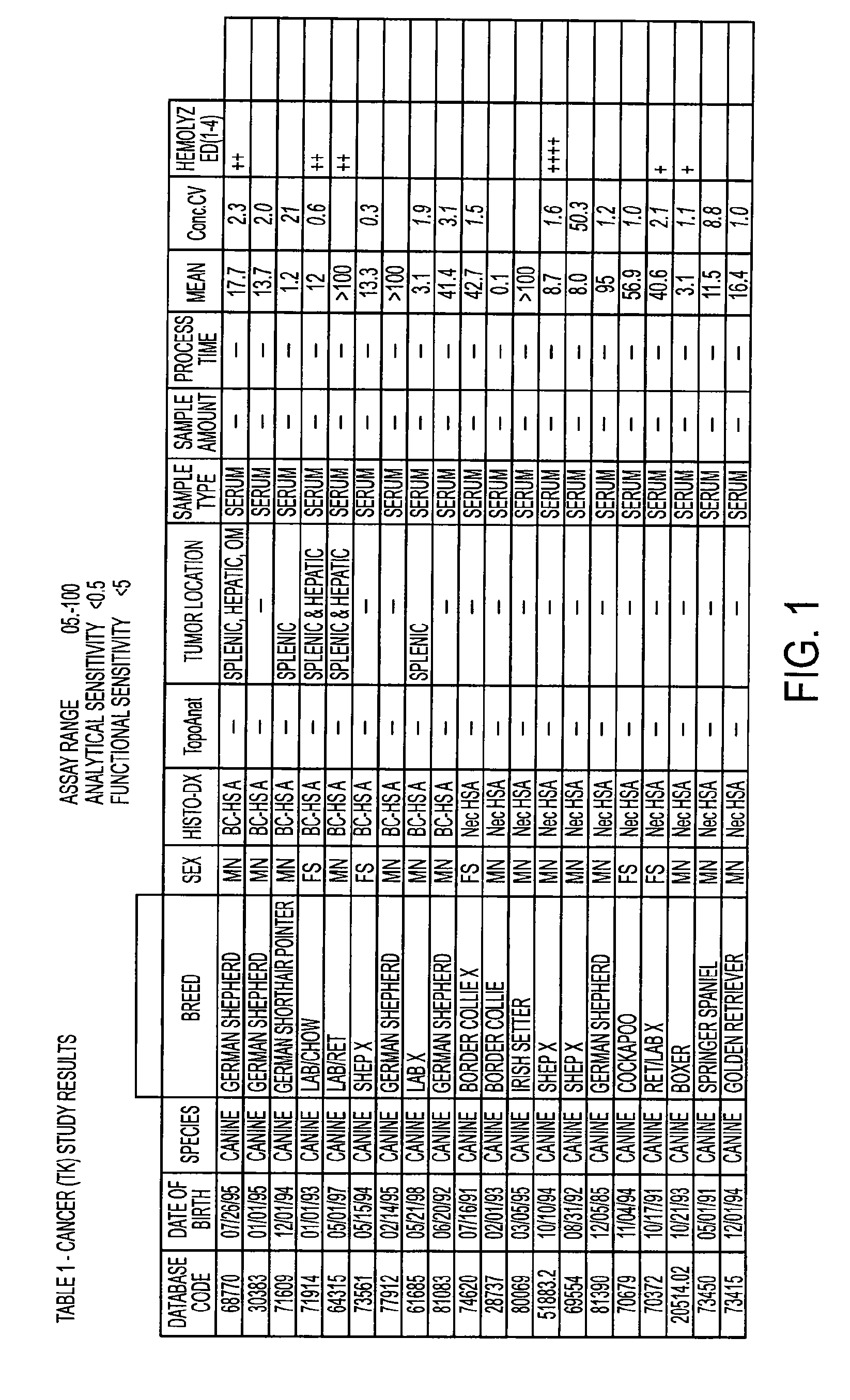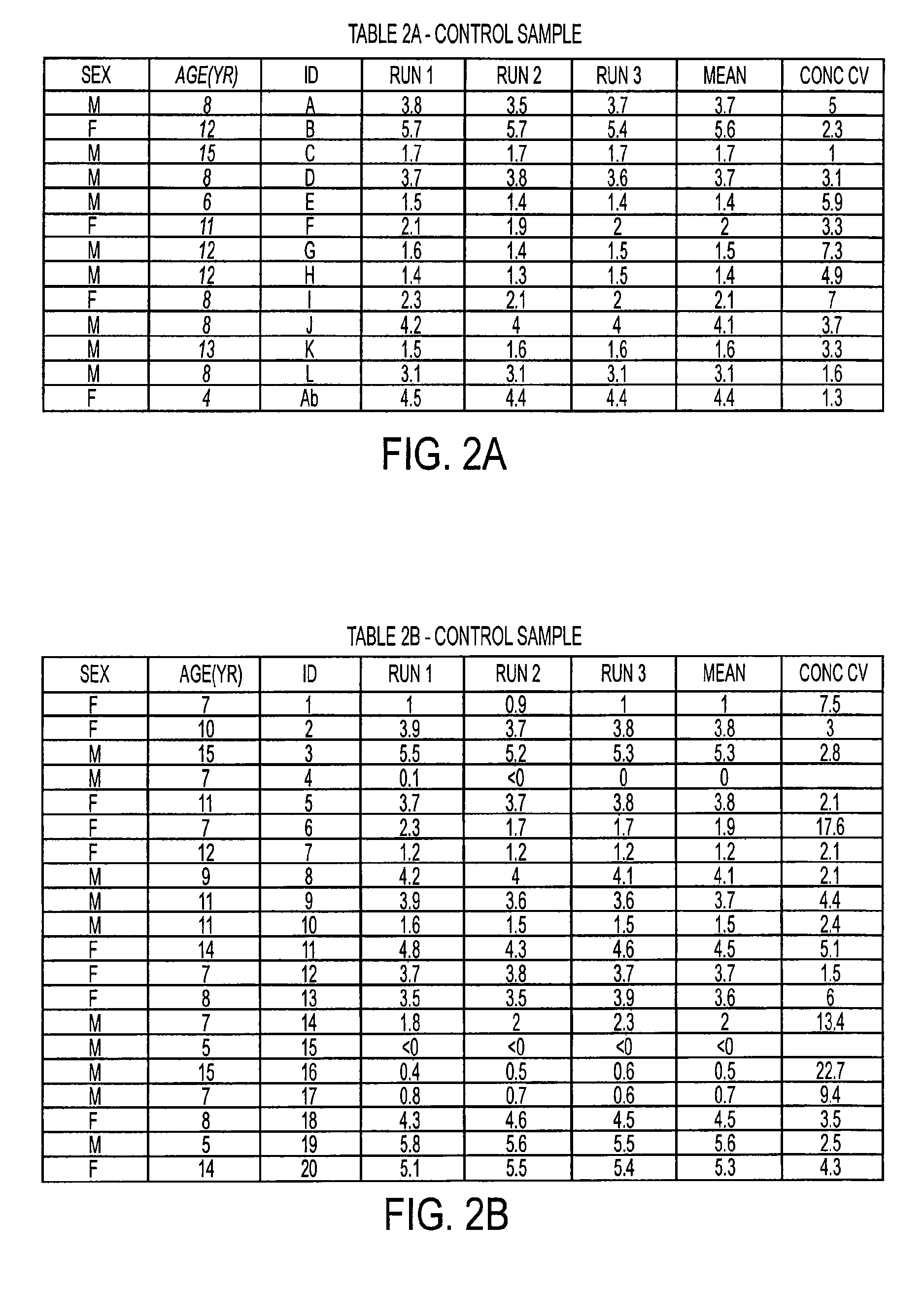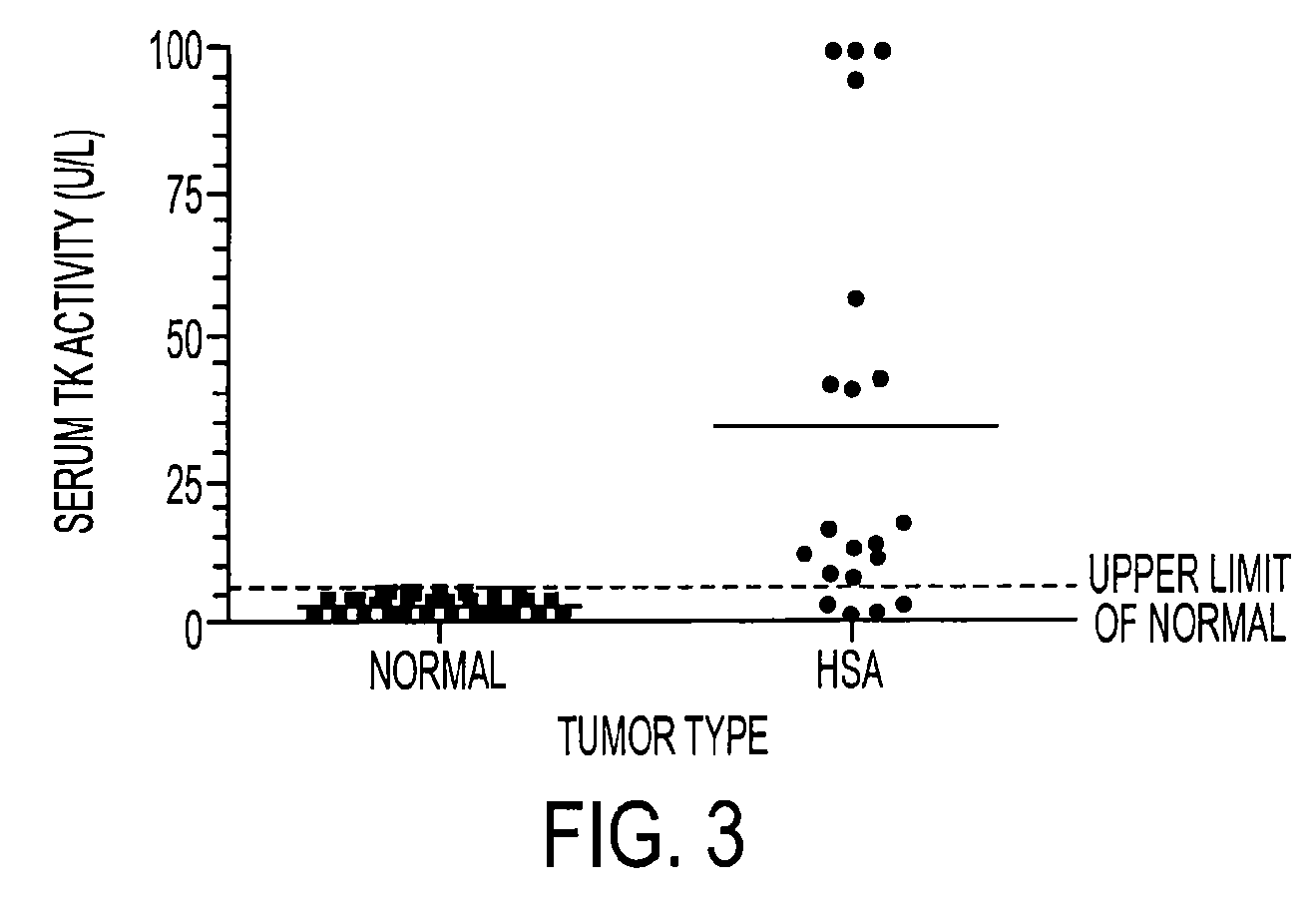Method for diagnosing hemangiosarcoma in canine using detection of thymidine kinase activity
a thymidine kinase and canine technology, applied in the field of canine hemangiosarcoma detection methods and equipment, can solve the problems of malignant skin tumors, unneutered male dogs (especially those with retained testicle) are at risk of testicular cancer, and are more susceptibl
- Summary
- Abstract
- Description
- Claims
- Application Information
AI Technical Summary
Benefits of technology
Problems solved by technology
Method used
Image
Examples
Embodiment Construction
[0022]Thymidine Kinase (“TK”) is a salvage enzyme and TK is only present in anticipation of cell division. Accordingly, TK will only be set free to the circulation from cells undergoing divisions. The enzyme is not set free from cells undergoing normal division where the cells have a special mechanism to degrade the proteins no longer needed after the cell division. In normal subjects the amount of TK in serum or plasma is therefore very low. Tumor cells release the TK enzyme to the circulation, probably in connection with the disruption of dead or dying tumor cells. The TK level in serum therefore serves as a measure of malignant proliferation, indirectly as a measure of the aggressiveness of the tumor.
[0023]In one embodiment of the disclosure, serum TK is used as a potential tumor marker for detecting hemangiosarcoma in veterinary patients. In another embodiment, the disclosure relates to a identifying a threshold for detecting the HSA from the presence of TK isoenzymes.
[0024]Prev...
PUM
| Property | Measurement | Unit |
|---|---|---|
| threshold | aaaaa | aaaaa |
| pH | aaaaa | aaaaa |
| concentration | aaaaa | aaaaa |
Abstract
Description
Claims
Application Information
 Login to View More
Login to View More - R&D
- Intellectual Property
- Life Sciences
- Materials
- Tech Scout
- Unparalleled Data Quality
- Higher Quality Content
- 60% Fewer Hallucinations
Browse by: Latest US Patents, China's latest patents, Technical Efficacy Thesaurus, Application Domain, Technology Topic, Popular Technical Reports.
© 2025 PatSnap. All rights reserved.Legal|Privacy policy|Modern Slavery Act Transparency Statement|Sitemap|About US| Contact US: help@patsnap.com



